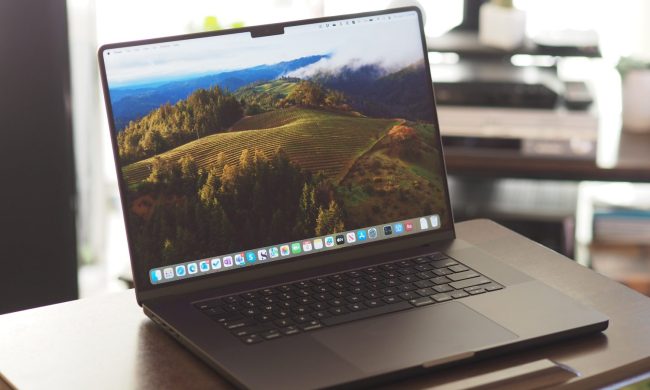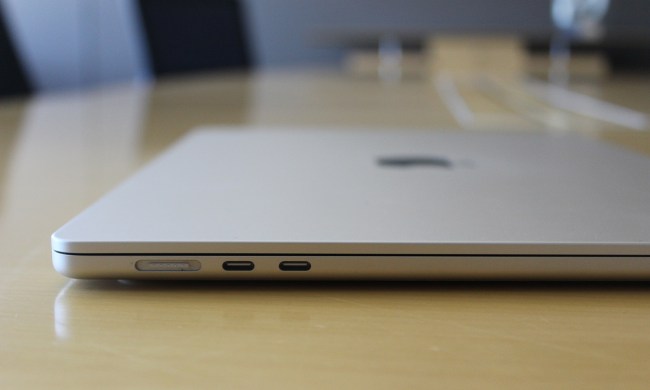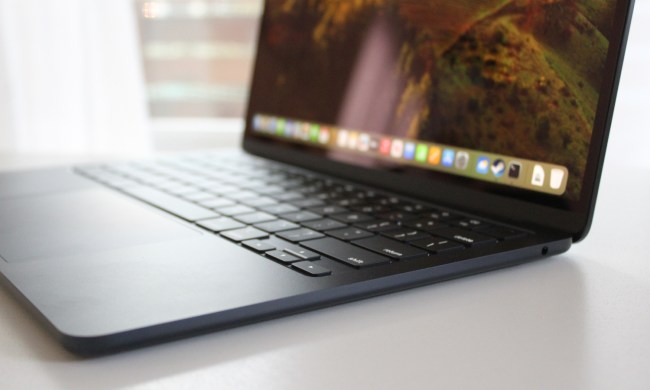There’s a lot of competition in the 13-inch laptop space. And when we say “a lot,” we mean it. If you’re looking for a highly portable laptop, there are many options to choose from. Whether you’re more of a budget buyer or someone looking for the best performance and specs available, there’s a laundry list of candidates.
Two of our favorites are the Asus ZenBook 13 UX333 and the MacBook Air. The ZenBook might be considered a budget pick, but its specs make it feel like a more expensive laptop. Coming in at a starting price of $850, the ZenBook 13 is a tremendous value choice. But if you’re willing to consider MacOS, then the newest MacBook Air is a natural competitor. Choosing between the Asus ZenBook and the MacBook Air isn’t easy, however, so let’s take a look at who provides the better machine.
Design
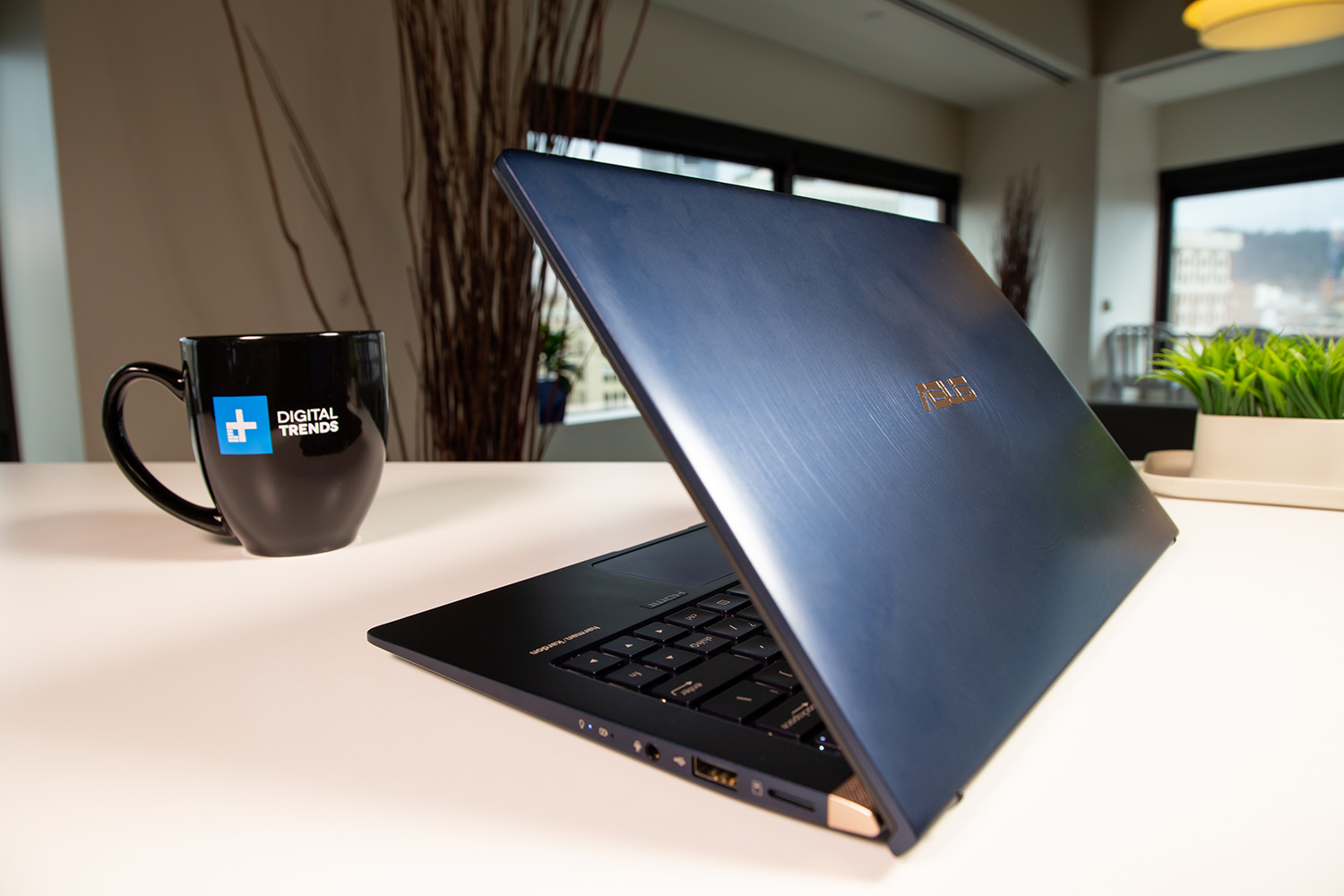
Previous ZenBook 13 models were rather pedestrian in their designs, but that’s not true of the UX333 model. The Royal Blue color scheme with gold trim (there’s also a Slate Gray model) is a great look that stands out without being garish. The MacBook Air sports Apple’s usual design flair that’s also attractive without being ostentatious, and the company offers the notebook in Gold, Silver, and Space Gray color schemes.
The ZenBook’s beauty isn’t just skin-deep. It’s built for MIL-STD-810g military standards for robustness, and feels like it. The MacBook Air is also well-built. Neither of these laptops will feel cheap in hand. They’re also similarly sized, with the ZenBook 13 coming in at 0.55 inches thick and weighing 2.7 pounds compared to the MacBook Air at 0.61 inches and 2.75 pounds.
We found the ZenBook’s keyboard to provide significantly more travel and a more comfortable feel than the MacBook Air’s 3rd-generation butterfly keyboard. On the other hand, the MacBook Air’s huge Force Touch touchpad is a joy to use, while The ZenBook’s version is a bit cramped. Asus did build in a nice feature, namely its LED number pad that shines behind the touchpad glass at the touch of a button — it’s great for accountants and anyone else who typically enters a lot of numbers.
Connectivity is a mixed bag. The ZenBook 13 has better legacy support with a mix of USB-A, USB-C, and HDMI ports that save you the need to carry around a bunch of dongles. But it lacks the speed and display flexibility of Thunderbolt 3, which is the only kind of port the MacBook Air supports.
You can’t fault the build quality or aesthetic of either of these laptops, but we like the Asus just a little bit better.
Performance
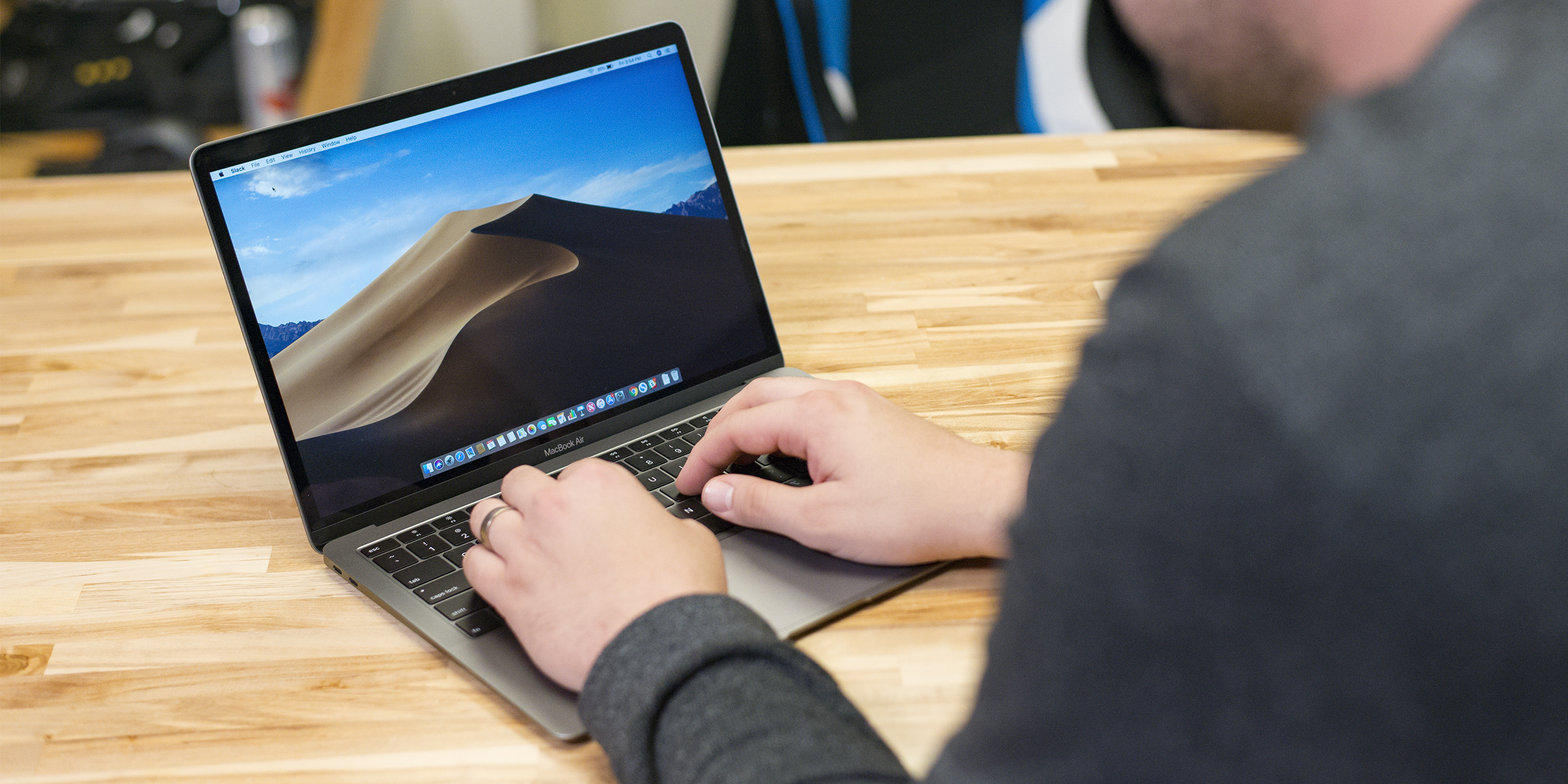
Performance is a larger differentiator between these two machines. The MacBook Air relies on Intel’s Y-series dual-core CPUs that aim at providing good enough productivity performance while sipping power and reducing heat. The ZenBook 13, on the other hand, equips full-speed quad-core U-Series processors. That makes it roughly twice as fast when you’re running demanding tasks that will take advantage of all the CPU’s cores.
Storage performance is a win for the MacBook Air but only on paper. Both laptops used cast PCIe solid state drives (SSDs), but the model that Asus chose for the ZenBook 13 is slower. The thing is, both are more than fast enough for their intended uses, and you’re unlikely to tell the difference in real life.
Regarding display quality, Apple usually scores big wins. Most MacBooks enjoy excellent displays with wide and accurate colors, large contrast, and high brightness. Not so much the MacBook Air, which was decidedly average or less than average across the board. The ZenBook 13 is much stronger, with a display that offers good color, great contrast and, solid brightness. It’s only Full HD (1,920 x 1,080) and so not as sharp as the Apple’s 2,560 x 1,600, but that’s its only relative weakness.
The ZenBook 13 is faster and, it has a better display overall. It gets a strong win here.
Portability

Both laptops will fit just fine in your backpack, and neither will weigh you down. That’s the price of admission in today’s 13-inch notebook market, though.
Battery life is where many notebooks part ways, and that certainly applies in this comparison. Simply put, the ZenBook 13 lasts significantly longer on a charge. Whether you consider our most demanding Basemark web benchmark test, web browsing, or looping a local video, the Asus lasted up to 50 percent longer than the Apple. And that’s with a more powerful CPU, to boot.
The ZenBook 13 will last you a full working day away from a charger, whereas the MacBook Air provides no such assurances.
Asus proves that “budget” doesn’t mean “inferior”

The ZenBook 13 wins each of our comparison sections, and yet it still costs only $850 for a Core i5-8265U, 8GB of RAM, and a 256GB SSD. That’s not a lot of money for such an excellent laptop.
The MacBook Air starts at $999 with a Core i5, 8GB of RAM, and a 128GB SSD, and pricing goes up from there. It’s $1,400 for a Core i5, 8GB of
Simply put, Asus has produced not only a better notebook in many ways but also one that’s lighter on the wallet. It’s a real value, and it solidly defeats the MacBook Air in this shootout.
MacBook Air | ZenBook 13
